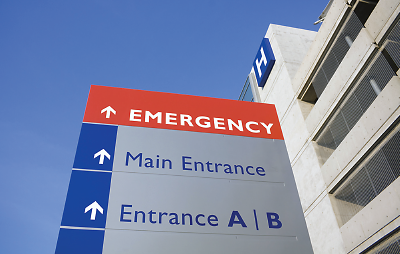Benzodiazepines, a class of drugs used to relieve symptoms of anxiety, have been deemed safe and effective by the Food and Drug Administration when taken as directed. However, when combined with other substances such as alcohol or opioid pain relievers, benzodiazepines can cause serious adverse effects that could be fatal.
At the end of 2014, the Substance Abuse and Mental Health Services Administration (SAMHSA) released a report on the rates of hospital emergency department (ED) visits due to the combination use of benzodiazepines and opioid pain relievers or alcohol. Information on such rates was gathered by SAMHSA’s Drug Abuse Warning Network (DAWN), a public-health surveillance system that monitors drug-related ED visits in the United States.
With data from more than 58,000 patient visits occurring between 2005 and 2011, DAWN assessed the association between ED visit outcome and three drug combinations—benzodiazepine and opioid pain relievers, benzodiazepine and alcohol, and benzodiazepine, opioid pain relievers, and alcohol.
Results showed that for ED visits involving the use of benzodiazepines in combination with opioid pain relievers, the risk of a serious outcome was 44 percent. Similarly, 44 percent of ED visits associated with the combined use of benzodiazepines and alcohol resulted in serious medical outcomes. For ED visits involving the combined use of benzodiazepines, opioid pain relievers, and alcohol, serious health outcomes were found in 50 percent of such visits.
As it relates to older patients, risks for serious health outcomes were significantly higher than for their younger counterparts. According to the analysis, 70 percent of ED visits involving people aged 65 or older who had combined benzodiazepines with alcohol and opioid pain relievers resulted in serious outcomes, compared with 39 percent of visits involving people aged 12 to 34 using the same combination of substances.
“Benzodiazepines are commonly prescribed medications that can benefit some patients, but, like all medications, they must be properly used and monitored,” said SAMHSA’s chief medical officer, Elinore McCance-Katz, M.D., Ph.D. “The adverse events being seen in emergency departments are often the result of drug-drug interactions that can occur between benzodiazepines, opioids, and alcohol.”
McCance-Katz emphasized that physicians and other prescribers must inform patients taking these medicines of the potential risk of drug interactions that can result in serious adverse events and even death. “Health care providers and patients must work together to ensure that prescribed medications are taken in a way that maximizes benefits and diminishes risks,” she concluded. ■
The report “Benzodiazepines in Combination With Opioid Pain Relievers or Alcohol: Greater Risk of More Serious Emergency Department Visit Outcomes” is based on findings from the 2005 to 2011 Drug Abuse Warning Network (DAWN) reports. It can be accessed
here.

